-
“Live burns” to benefit research and firefighter training
Fire researchers from the National Institute of Standards and Technology (NIST) and colleagues from fire service organizations will turn abandoned wood-frame, single-family houses near the site of an old Spartanburg, South Carolina, textile mill into proving and training grounds for new science-driven fire-fighting techniques. The objective of the study is to improve firefighter safety and effectiveness.
-
-
Better predictions of Asian summer monsoons, tropical storms
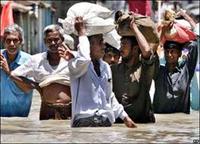
The amount of rainfall and number of tropical storms during the summer monsoon season greatly impact the agriculture, economy, and people in Asia. Though meteorologists and climate scientists have worked for years to develop helpful prediction systems, seasonal predictions of these two types of weather phenomena are still poor. Scientists have now made a promising breakthrough for predicting in spring both the summer monsoon rainfall over East Asia and the number of tropical storms affecting East Asian coastal areas.
-
-
House approves $50.7 billion Sandy relief bill
The House Tuesday night approved, by a vote of 241 to 180, the $50.7 billion in a Sandy relief package, the second installment of a $60.4 billion package requested by the White House and approved by the Senate (last week the House approved the $9.7 million flood-insurance part of the package). Effort by conservative members of the House to offset a part of the bill’s cost with across-the-board federal budget cuts failed on a 258-162 vote.
-
-
Drought, heat turn hundreds of U.S. counties into disaster areas

The U.S. Agriculture Department (USDA) last week said that drought conditions and heat necessitated designating 597 counties in fourteen states as primary natural disaster areas. The affected counties have suffered severe drought for eight consecutive weeks, which qualified them for the automatic designation. 2012 had been the hottest year on record for the continental United States: the year’s average temperature of 55.3 degrees Fahrenheit across the Lower 48, which was more than 3.2 degrees warmer than the average for the twentieth century.
-
-
U.K. revises nuke emergency plans post-Fukushima
The Sizewell nuclear power station in Suffolk, England, was decommissioned in 2006, but after the 2011 Fukushima disaster, the Suffolk authorities thought there was a need to upgrade the emergency plans for the people living around the plant. There are disagreements, however, over the radius of the emergency zone around the plant, and how many people should be included i evacuation plans and given potassium iodide tablets in the event of a radiation leak.
-
-
Tiny helpers: Atom-thick flakes help clean up radioactive waste, fracking sites
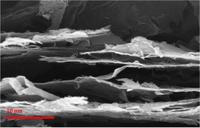
Graphene oxide has a remarkable ability quickly to remove radioactive material from contaminated water. Researchers determined that microscopic, atom-thick flakes of graphene oxide bind quickly to natural and human-made radionuclides and condense them into solids. The discovery could be a boon in the cleanup of contaminated sites like the Fukushima nuclear plants, and it could also cut the cost of hydraulic fracturing (“fracking”) for oil and gas recovery and help reboot American mining of rare earth metals.
-
-
Conquering cholera in Haiti without vaccinating most people

The Centers for Disease Control and Prevention has been skeptical about the effectiveness of vaccination against cholera in Haiti; it has instead emphasized cleaning up the water supply and improving sanitation as the best ways to check the spread of the disease; a new study suggests that vaccination would be effective, and that cholera could be contained in Haiti by vaccinating less than half the population
-
-
Shoring up Long Island’s natural shore defenses against future storms
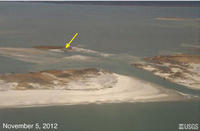
Sand and other coarse-grained sediments are vital to the naturally occurring barrier systems which dissipate storm surges, protect coastal residences, and shelter biologically diverse estuaries and ecosystems; a team of researchers is conducting marine geophysical surveys of the seafloor and shallow subsurface to assess the health of the offshore barrier system which protects the New York Harbor and southwestern Long Island region against damage from future storms
-
-
Before the deluge: improving flood forecasting
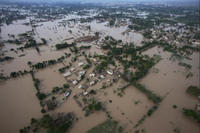
Summer 2012 was the third consecutive summer in which Pakistan has endured catastrophic floods; thirty million people were affected in 2010 and 2011; the summer 2012 floods affected 4.7 million more, killed nearly 500 people, and led to the evacuation of 350,000; Pakistan, stubbornly refusing to accept external assistance in flood forecasting, is not able to predict and prepare for natural disasters on its own
-
-
Appearances deceive: supposedly “stable” zone make earthquakes even more powerful
In an earthquake, ground motion is the result of waves emitted when the two sides of a fault move — or slip — rapidly past each other, with an average relative speed of about three feet per second. Not all fault segments move so quickly, however; new earthquake fault models show that “stable” zones may contribute to the generation of massive earthquakes
-
-
Sen. David Vitter (R-La.) calls Sen. Harry Reid an "idiot” over Katrina comment

Last week, during a floor debate in the Senate on the $9.7 billion portion of the Sandy relief measure, Majority Leader Harry Reid (D-Nevada), who supported the measure, said: “The people of New Orleans and that area, they were hurt, but nothing in comparison to what happened to the people in New York and New Jersey”; in response, Sen. David Vitter (R-Louisiana) said: “Sadly, Harry Reid has again revealed himself to be an idiot”
-
-
"Prophylactic dressing" for walls make buildings safer during earthquakes
In the case of earthquakes, only seconds may remain for a safe escape from buildings; debris falling down and obstructing the escape routes may even aggravate the situation; a new product extends the time for saving lives by reinforcing walls and keeping off the debris; an innovative building material manufacturer now has launched the mature innovation in the market
-
-
Congress approves first part of Sandy relief measure
Congress approved a $9.7 billion Sandy aid package last Friday after a two month delay; the delay was caused by fiscal cliff talks, warnings of federal funds cutbacks, and controversy over millions of dollars in unrelated projects; in two weeks, Congress will vote on the second part — an additional $50 billion Sandy relief package
-
-
BP settlement includes $350 million funding for Gulf health, environmental protection
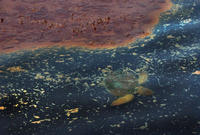
As part of the $4 billion settlement announced last month between the federal government and BP concerning the 2010 Deepwater Horizon disaster, the National Academy of Sciences has been asked to establish a new $350 million, 30-year program on human health and environmental protection in the Gulf of Mexico
-
-
Facing bipartisan outrage, House leadership abandons plan to postpone Sandy relief vote
Responding to bipartisan outrage expressed by the New York and New Jersey congressional delegations, House Speaker John Boehner said he was committed to hold a House vote by 15 January on a large relief package for victims of Superstorm Sandy; in addition to abandoning the plan to postpone the vote, the House leadership also gave up on bringing to a vote the $27 billion relief measure proposed by the House Appropriations Committee, and instead will bring to a vote the White House-proposed and Senate-approved bill, which calls for $60.4 billion in disaster relief
-
More headlines
The long view
Trump Aims to Shut Down State Climate Policies
By Alex Brown
President Donald Trump has launched an all-out legal attack on states’ authority to set climate change policy. Climate-focused state leaders say his administration has no legal basis to unravel their efforts.
